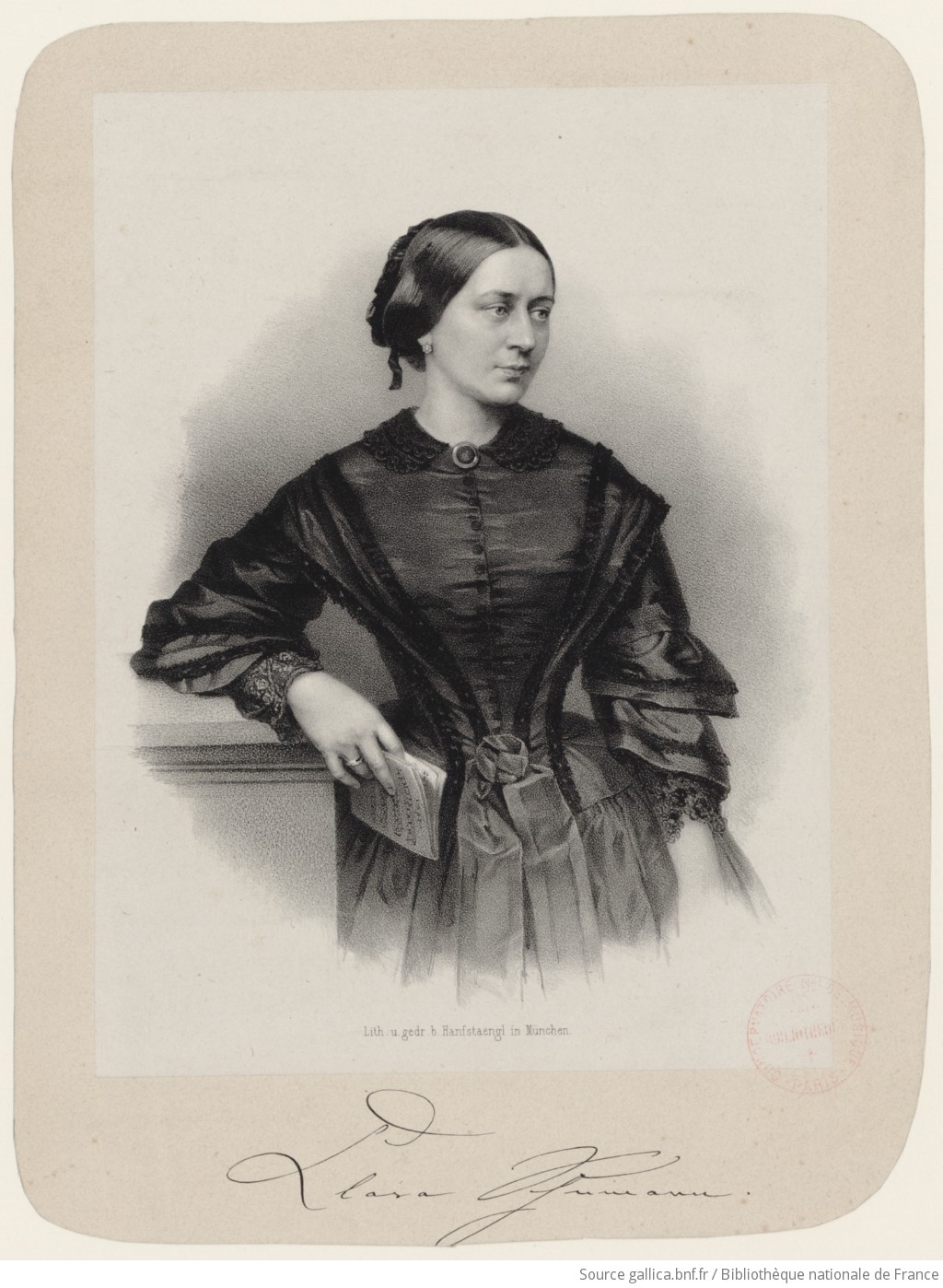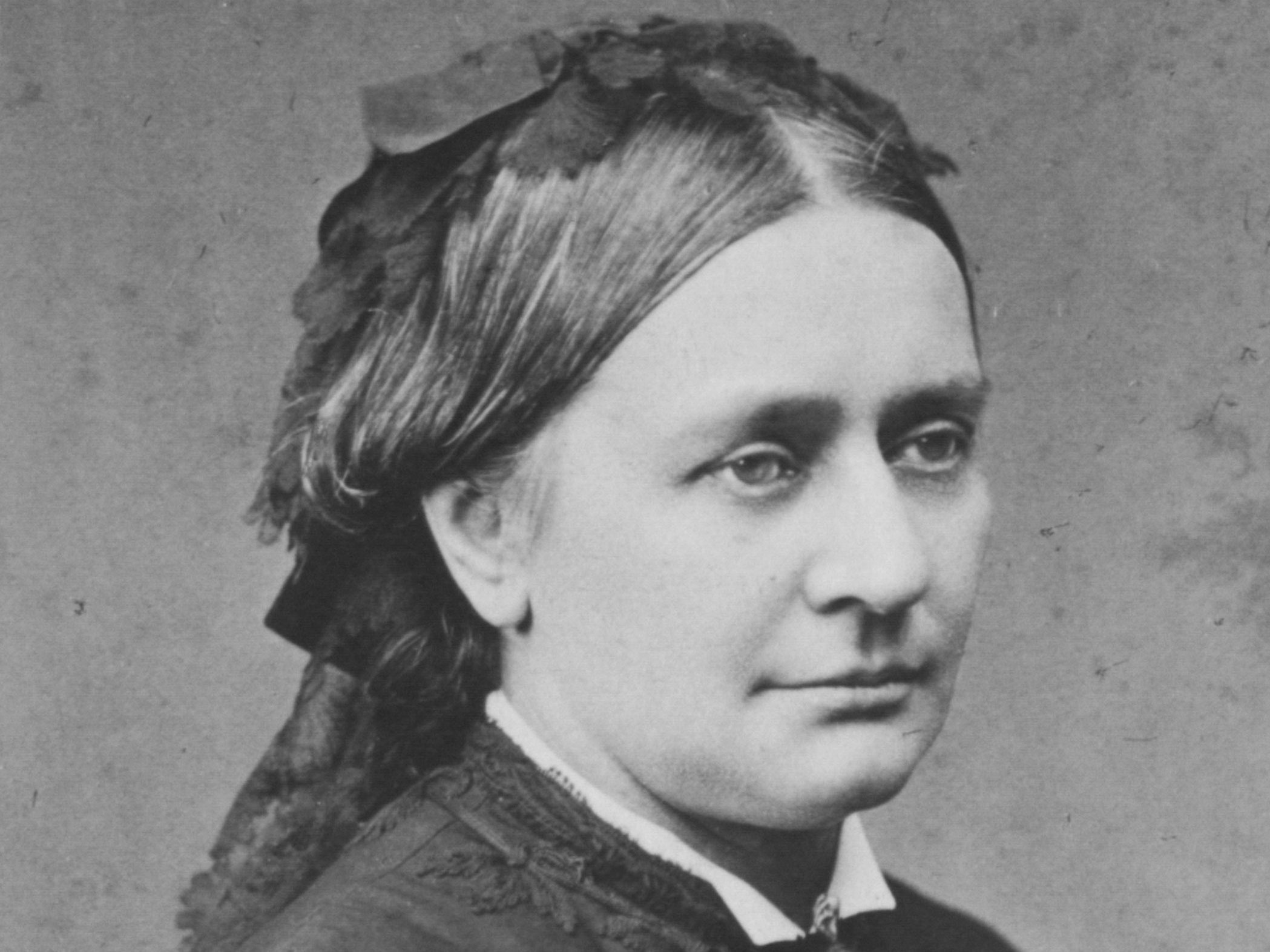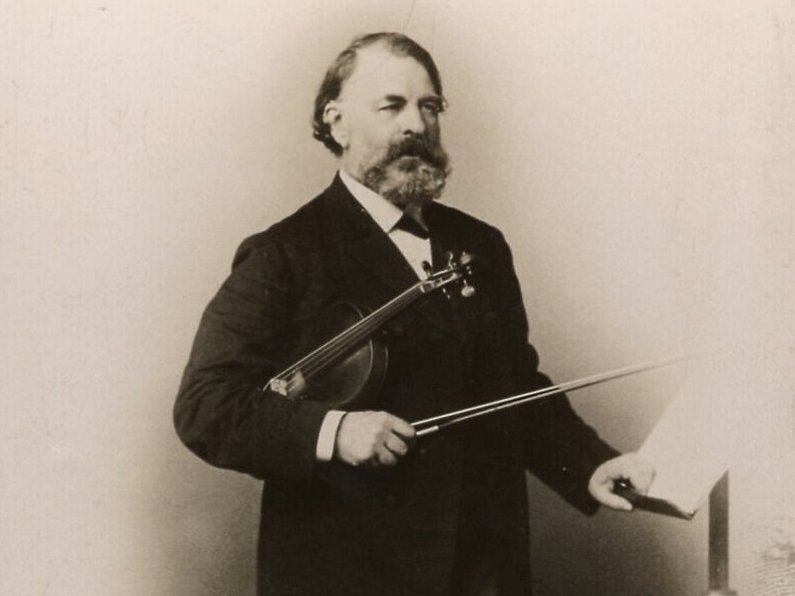- Portrait
- History

Although she is often remembered chiefly as the wife of the brilliant composer Robert Schumann, in her own day, Clara Schumann led a high-profile life as a pianist, composer and teacher. In May, the Berliner Philharmoniker perform her Piano Concerto, a work in the German Romantic tradition. The soloist is the Italian pianist Beatrice Rana, who will be making her debut with the orchestra.
What a life! Clara Wieck was born in Leipzig in 1819, the daughter of a piano teacher and a dealer in musical instruments. She soon enjoyed a reputation as a child prodigy in the international music world. Robert Schumann, who was ten years older, met her while she was still a child. Their marriage produced eight children. Clara struggled to reconcile the demands of motherhood with her activities as a concert artist, a situation that led to regular financial tensions in the couple’s relationship.
In 1853, the couple met Johannes Brahms, who was then 20 years old. Whether he and Clara were ever intimate must remain her secret. Whatever the answer, their friendship, which was by no means uncomplicated, lasted until the end of her life. Following her husband’s death in 1856, Clara consolidated her international reputation as an outstanding pianist. making no fewer than nineteen visits to England alone. At the same time she was much admired as a teacher, known in part for her strictness. She spent the last twenty years of her life in Frankfurt, attracting students from all over the world to the city’s Conservatory with her charismatic personality.
Clara Schumann is also a fascinating figure as a contemporary eyewitness of an age that was both politically and artistically turbulent. When she was born in 1819, Napoleon, Goethe, Beethoven and Schubert were still alive: she was even introduced to Goethe as a child. When she died in 1896, Debussy, Mahler and Richard Strauss had already ushered in a new, modern age in music. She saw the revolutions of 1848/49 first-hand, later witnessing the foundation of the German Empire and the years of rapid economic expansion known as the Gründerjahre. No less important for the career of an international concert artist was the development of new and quicker forms of transport. During her early career she had travelled by ship, stage coach, and - during her tour of Russia - even by sleigh. Later her appearances both at home and abroad were facilitated by the growth of the rail network.
Pianist with infallible instinct
Clara Schumann was one of the key initiators of the Romantic movement, later becoming one of its survivors and guardians. It is no wonder, then, that over the decades there was a marked change in her attitude to the music of her time. During her middle years, she championed the progressive music of Chopin and of her husband. By the end of her career, her repertory had a distinctly historical aura; of the composers whose works she programmed after her husband’s death, the only one who was still alive was Brahms. In comparison to the “music of the future” that was associated with the names of Liszt and Wagner, both Brahms and Schumann were regarded as conservatives.
From a present-day perspective, conversely, it is striking that practically all of the works that she played have retained a place in the repertory. She rarely gave solo recitals of the kind familiar to today’s audiences, preferring mixed programmes that combined solo pieces with piano concertos or with chamber works and songs. But in terms of her choice of composers and pieces, she demonstrated an infallible instinct. In addition to Bach, Scarlatti, Mozart and Beethoven, whose notoriously demanding “Hammerklavier” Sonata she was one of the first pianists to perform in public, the music that featured most frequently in her programmes was by Schubert, Chopin, Mendelssohn and, of course, by her husband.
Unfortunately there are no surviving recordings of her piano-playing, even though this would have been technologically possible at the end of the nineteenth century. But on the basis of press reviews, of recordings by her pupils, and of her own editions of Schumann’s works, to which she added tempo markings, pedalling instructions and even fingering, it has been possible to find some clues towards understanding her own tremendous technical sovereignty and her understanding of interpretation. There is no doubt that she played a significant role in establishing the concept of Werktreue – fidelity to the original work– in the sense of an intellectual and spiritual engagement with the music.
As with all larger-than-life figures in the history of our culture, our view of Clara Schumann has altered over time, and there have been attempts to topple her from her pedestal. The year 1990 offered an ironic insight into the workings of history, with Clara Schumann’s face appearing on 100-mark banknotes, while at the same time a new biography which seemed to go out of its way to belittle her was released. With no apparent sympathy for her subject’s childhood, marriage and family history, biographer Eva Weissweiler painted the blackest of pictures of her subject, adopting a tone both sarcastic and incendiary in her criticism of the “kitsch” that has undeniably coloured our view of the “power couple” of German Romanticism. Despite this one-sided approach to her sources, Weissweiler none the less managed to give new impetus to research into Clara Schumann by addressing aspects of her life that had long been taboo: the darker side of the most extreme forms of self-discipline that she needed in order to cope with the challenges of her life; her oppressive relationship with her authoritarian father; and her frequently claustrophobic marriage with a composer whose creativity was caught in the tension between idealistic flights of fancy and bouts of crippling depression.
An autonomous artist
Current writings on Clara Schumann tend to stress their authors’ admiration for what from both a human and an artistic point of view was an impressive life’s work. Research into Clara Schumann is arguably more intense and more productive than it has ever been in the past, allowing a second Clara Schumann to emerge alongside the traditional Romantic stereotype, this one an emphatically modern figure. A mere glance at the way in which she organized her own concerts makes it clear that it is legitimate to speak of “management” and “networking”, and to acknowledge her attempt to retain control of her own “image” in the face of a public that was often motivated by envy. What remains exemplary is her ability to make her way in a man’s world that was hostile to all autonomous female artists, a feat that she achieved with a mixture of uncompromising persistence and a powerful desire to express herself through music.
Ultimately observers have also recognized the importance of Clara Schumann’s own compositions. Unfortunately she gave up composition almost completely in the wake of her husband’s death. Her list of works includes a number of songs that are as original as they are beautiful, as well as romances, sets of variations, character-pieces, a magnificent Piano Trio and – her only work scored for an orchestra – her Piano Concerto.
Clara Schumann also played a significant role in the history of the Berliner Philharmoniker, with a total of five appearances between 1883 and 1889, providing a sense of continuity between the age of early and high Romanticism and that of the modern orchestra. Clara Schumann’s Piano Concerto in A minor, which she premiered in 1835, when she was only sixteen, under the direction of Felix Mendelssohn, will be performed for the first time by the Berliner Philharmoniker in May 2024.

Clara Schumann and the Berliner Philharmoniker
Clara Schumann was a composer, a piano teacher and one of the most acclaimed pianists of her day.

The Springtime of Love
For Robert Schumann, the early years of his marriage to Clara Wieck were a time of happiness and exuberant creativity. Some of his finest works date from this period.

Johannes Brahms and Joseph Joachim
Without the violinist Joseph Joachim, Brahms would probably never have written his Violin Concerto. The work is the result and the expression of a long-standing friendship.